Date : April 25 - 26, 2023
Report: Pre-G7 Summit Hiroshima Press Tour
post date : 2023.06.12
This press tour visited Hiroshima ahead of the G7 Summit to listen to locals’ voices on the summit, and covered the realities of the atomic bombing, the hope of atomic bomb survivors for peace, the history of reconstruction by companies from the postwar period to the present, and efforts of young people who are carrying on survivors’ hopes.
A total of 11 journalists joined the tour, from media organizations based out of China, France, Japan (an English-language newspaper), Spain, Turkey, Vietnam, etc.
*This tour was sponsored by the Citizens Council for the Hiroshima Summit, co-sponsored by the Ministry of Foreign Affairs, and run by the FPCJ.
*For more details on the tour stops, see the tour notice here.
[Day 1]
<Orizuru Tower/Companies in Hiroshima Prefecture>
The Orizuru Tower, operated by Hiroshima Mazda, is a multipurpose space with a variety of installations, including rooftop observation deck and office. The journalists were briefed by Ms. KANEHIRAKyoko, Executive Advisor to Hiroshima Mazda and Hiroshima Orizuru Tower Director, about the background and philosophy behind its construction, and also heard about the postwar history of local companies from Mr. SHOBUDA Kiyotaka, Deputy Chairman, Pride of Hiroshima Exhibition Executive Committee, the exhibition which introduces postwar reconstruction by companies in the prefecture. The journalists asked questions about the connection between orizuru (paper crane) and Hiroshima, and the significance of sending a message of peace from Hiroshima.

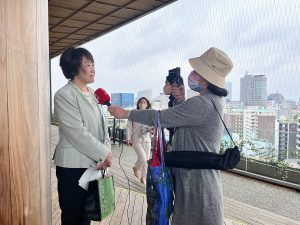
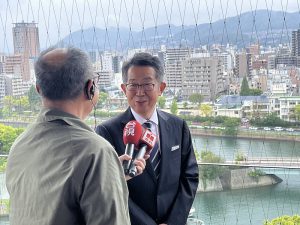

Ganso Henkutsuya is a traditional okonomiyaki restaurant that opened in Shintenchi Square, where okonomiyaki and other food stalls gathered after World War II. After tasting the okonomiyaki for lunch, which is a favourite soul food of the citizens, the journalists were briefed by the third-generation owner, Mr. OKINAKA Sachio, about the history of the restaurant which he had heard about from his grandmother-in-law. The journalists asked questions about the reason for adding noodles to the okonomiyaki, how okonomiyaki will be passed on in the future, and what the soul food means to Hiroshima citizens.

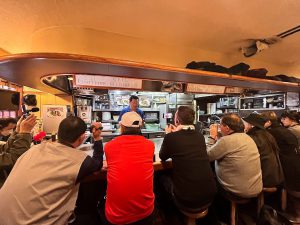
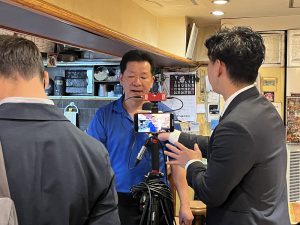
<Interview with Atomic Bomb Survivor>
The journalists listened to Ms. KONO Kiyomi, an atomic bomb survivor, she talked about memories of the atomic bombing and her thoughts on the abolition of nuclear weapons and peace, showing paintings that recreates the scene of those days and others. The journalists asked her what message she would like to convey to the G7 leaders and other journalists commented that they were very impressed.
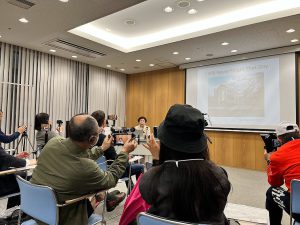
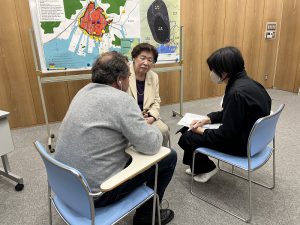
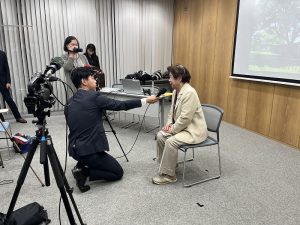
<Interview with Mayor of Hiroshima>
The journalists were briefed by Mr. MATSUI Kazumi, Mayor of Hiroshima, about hosting the G7 Hiroshima Summit, passing on the experiences of the damage caused by the atomic bomb and security. The journalists asked what he would like to show and tell the leaders of other countries during the G7 Hiroshima Summit, what efforts is made to continue sharing the atomic bomb survivors' experiences, etc.
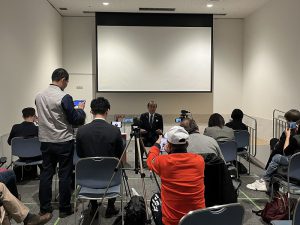

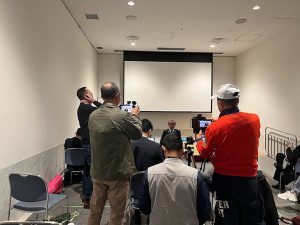
<Hiroshima Peace Memorial Museum>
After a brief overview by Mr. TOYA Toshihiro, Assistant Director, Hiroshima Peace Memorial Museum, the journalists looked around the museum.
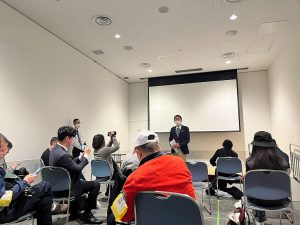
[Day 2]
<Hiroshima Electric Railway Co., Ltd.>
The streetcars, which resumed operation three days after the atomic bombing, have supported Hiroshima as it began reconstruction. The journalists first took photos of the atomic-bombed streetcars at the Aioi Bridge, and saw how trains from the time of the bombing still run through the city. Afterwards, at the headquarters of Hiroshima Electric Railway, the journalists were briefed by Mr. HIRAMACHI Takanori, Director, Tram Division, and Mr. HIGASHI Koichi , Executive Officer, Tram Division, about the company's prewar and postwar history. They then covered the atomic-bombed streetcar and the G7-wrapped streetcar designed by high school students in the prefecture, stored at the Senda Depot. The journalists asked questions such as expectations for the G7 summit, why streetcars were introduced in Hiroshima and are still in use today, and the role of the atomic-bombed streetcars.
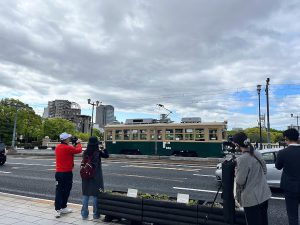
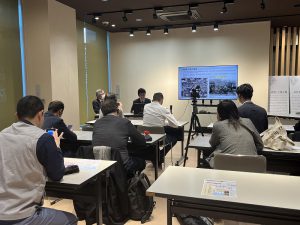

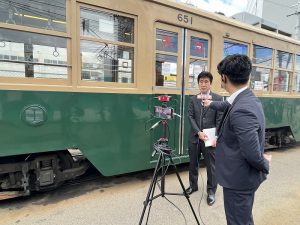
Maruni Wood Industry is a manufacturer of wooden furniture well-regarded around the world. The journalists were briefed by Mr. YAMANAKA Takeshi about the company's prewar and postwar history and sales they have made around the world. The tour then saw the manufacturing process for the Hiroshima Armchair, which is used by top companies and luxury hotels around the world, including the materials used, how parts are processed, and how it is put together. The journalists asked questions including why it could be a global standard, how it is differentiated from mass production overseas, and what elements attract young people to it.
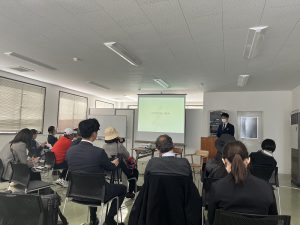
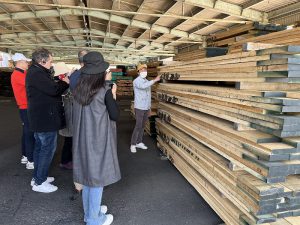
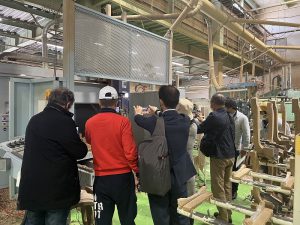
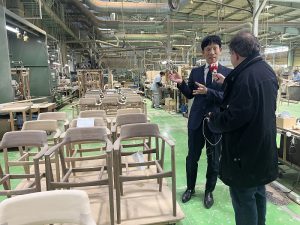
<Sotoku High School Newspaper Club>
The Sotoku High School Newspaper Club is one of the largest newspaper clubs in Japan, with over 190 members, and independently covers a wide variety of topics. After receiving an overview of the club from Mr. HANAOKA Kengo, Newspaper Club Teacher Advisor, the journalists heard about its activities from club members belonging to the Peace Issues Desk and the G7 Hiroshima Summit Special Desk. The journalists and students then had time to interview each other. The journalists asked the students such as what they think about peace, whether they want to become journalists in the future and what they hope to tell people who do not know about Japan.
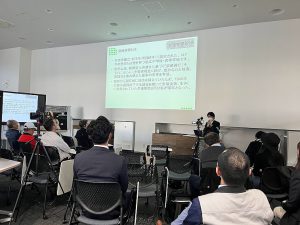
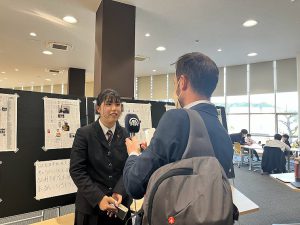

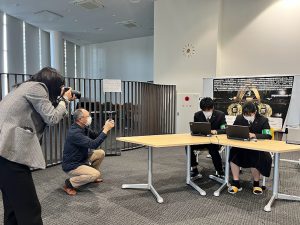
<Hiroshima Municipal Motomachi Senior High School Course of Creative Expression>
Every year, students of Motomachi Senior High School's Course of Creative Expression participate in the Hiroshima Peace Memorial Museum’s Painting the Atomic Bombing with the Next Generation project, where they spend approximately 10 months painting a scene of the bombing, while speaking one-on-one with atomic bomb survivors about their experiences. After visiting the production site, three students from the course explained the scenes they painted and talked about what they felt while painting them. The journalists asked questions including what kind of dialogue they had with atomic bomb survivors as they worked on their paintings, and what they learned most from their participation. Some journalist also commented on how wonderful it is that the young people are experiencing the atomic bomb survivors’ experiences as if they had had their own.

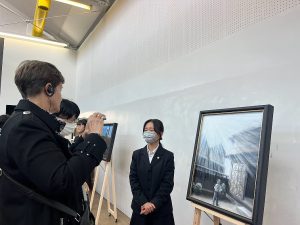
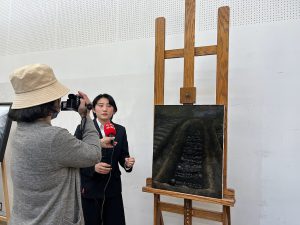
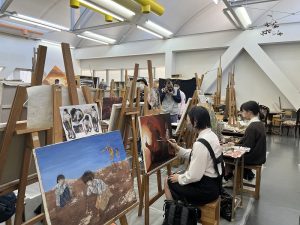
◆Below is some of the reporting based on this tour.
东南网 (China)
"珍惜和平——走进日本广岛和平纪念资料馆和纸鹤塔" (5 May)
"日本广岛的复兴精神:仍在行走的原爆电车与创造经典的曲木工厂" (5 May)
RTL (France)
Le journal RTL de 5h du 19 mai 2023 (19 May)
JAPON – Le G7 s’ouvre a Hiroshima, 78 ans apres la bombe atomique (19 May)
Dot Dot News (點新聞) (Hong Kong)
"廣島戰後時代衍生的靈魂食物——廣島燒"(7 May)
Agencia EFE(Spain)
"Teenagers’ paintings keep memories of Hiroshima survivors alive"(17 May)
Infobae(US)
"Periodistas adolescentes japoneses siguen de cerca la cumbre del G7 en Hiroshima"(19 May)
寰宇新聞(Taiwan)
""像打雷加地鳴"原爆受害者口述二戰經驗"(16 May)
Taiwan Television (台湾電視公司) (Taiwan)
"辦G7領袖高峰會 廣島悠久路面電車見證歷史"(11 May)
中央社CNA(Taiwan)
"92歲廣島原爆倖存者 難忘堆積如山的少年屍體"(17 May)
"G7廣島峰會倒數 二戰後復興象徵「御好燒」成話題"(18 May)
Anadolu News Agency(Turkey)
"Hiroşimalılar, Ukrayna'daki savaşın gölgesinde yapılacak G7'nin barışı teşvik etmesini istiyor"(18 May)



